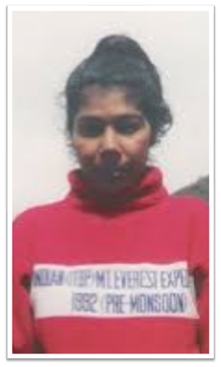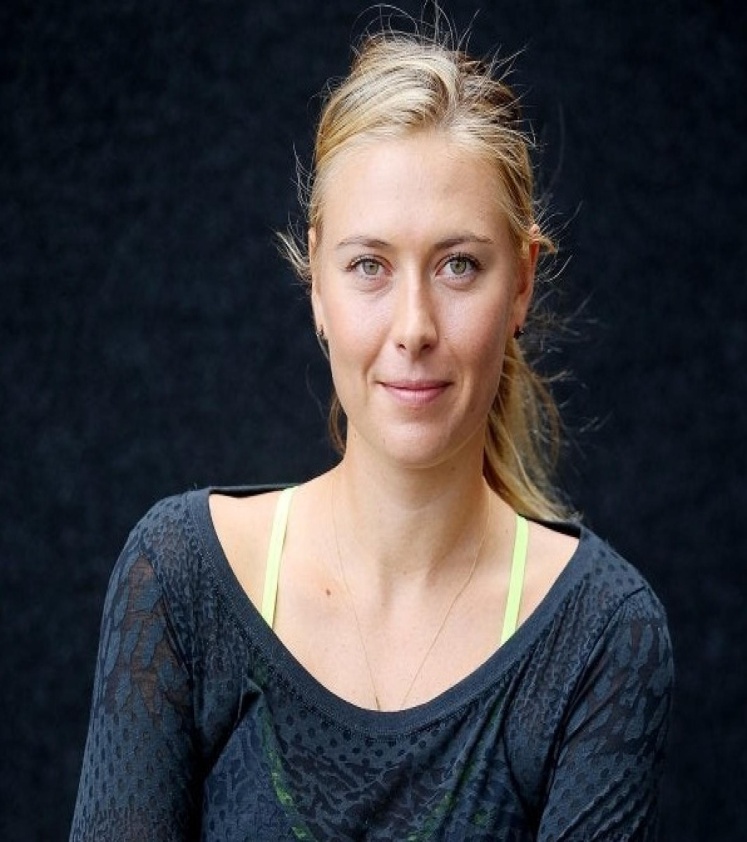Lesson-8
Reach for the Top
(1) Santosh Yadav

Reach for the Top Part 1 Introduction
The storey is about Santosh Yadav, the world's first woman to climb Mount Everest twice. Her story is truly inspiring. Despite being born in a skewed society that did not welcome the birth of a girl child, and where girls were married off at the age of sixteen, she build her own path, followed her desires, and achieved global fame.
Reach for the Top Part 1 Summary
Santosh Yadav was born to wealthy landowners in Joniya, a village in Haryana's Rohtak district. She was the youngest of six children, the youngest sister to five older brothers. She was forced to attend the village school due to cultural norms. She had been against customs since childhood, preferring to wear shorts instead of traditional dresses such as salwar kameez. She was forced to marry at the age of sixteen, like other girls in the village, but she resisted and insisted on getting an education first. She enrolled in a Delhi school, but her parents refused to support her.
She accepted it and decided to work part-time to help pay for her education. Finally, her parents agreed to support her up. Her father supported her desire to further her education. Santosh went to the Maharani college in Jaipur after high school and lived in the Kasturba hostel. She saw the villagers climbing the Aravalli hills and wondered what was on the other side of the hills. She joined a group of mountaineers and thus started on her first climbing expedition.
She climbed Mount Everest in four years, in 1992. Her seniors were impressed by her determination, physical and mental strength. Her fellow climbers admired her concern for others and willingness to work as part of a team. By sharing her oxygen cylinder with another climber named Mohan Singh, she saved his life. She joined an Indo-Nepalese women's expedition and climbed Everest twice, becoming the first woman in the world to do so.
Santosh cannot express how happy and proud she felt when she was on top of the world. She was proud to be an Indian as she hoisted the Indian flag. She brought down 500 kilogrammes of garbage from the Himalayas as an environmentalist.
Reach for the Top Part 1 Lesson Explanation
The only woman in the world who has scaled Mt Everest twice was born in a society where the birth of a son was regarded as a blessing, and a daughter, though not considered a curse, was not generally welcome. When her mother was expecting Santosh, a traveling ‘holy man’, giving her his blessing, assumed that she wanted a son. But, to everyone’s surprise, the unborn child’s grandmother, who was standing close by, told him that they did not want a son.
The ‘holy man’ was also surprised! Nevertheless, he gave the requested blessing . . . and as destiny would have it, the blessing seemed to work. Santosh was born the sixth child in a family with five sons, a sister to five brothers. She was born in the small village of Joniya was of Rewari District in Haryana.
Santosh Yadav was the only woman in the world who had climbed Mount Everest twice at the time this article was written. She was born in a society that favoured having a male child over a female child. They did not consider the birth of a girl child to be unfortunate, but it was also not celebrated. When Santosh was due to be born, a saint blessed her, assuming that Santosh's mother desired a son. Santosh's grandmother told the saint that they did not want another son because she already had five sons. The saint was astounded to hear this and alternately blessed her. Santosh was born, and the blessing became a reality. She was the youngest of six siblings, the youngest of five brothers. Santosh was born in the Haryana district of Rewari, in the village of Joniyawas.
The girl was given the name ‘Santosh’, which means contentment. But Santosh was not always content with her place in a traditional way of life. She began living life on her own terms from the start. Where other girls wore traditional Indian dresses, Santosh preferred shorts. Looking back, she says now, “From the very beginning I was quite determined that if I chose a correct and a rational path, the others around me had to change, not me.”
- Contentment: satisfaction
Santosh, whose name means "contentment," was dissatisfied with her traditional way of life. She began living life on her own terms at a young age. While the other girls wore traditional Indian attire such as salwar kameez, she preferred to wear shorts. Santosh recalls that she was determined from childhood to live her life according to what she felt was right for her. If she was correct, others would have to change their ways, not hers.
Santosh’s parents were affluent landowners who could afford to send their children to the best schools, even to the country’s capital, New Delhi, which was quite close by. But, in line with the prevailing custom in the family, Santosh had to make do with the local village school. So, she decided to fight the system in her own quiet way when the right moment arrived. And the right moment came when she turned sixteen. At sixteen, most of the girls in her village used to get married. Santosh was also under pressure from her parents to do the same.
- Affluent: well-to-do
- In line with: following or in accordance with, according to
- Custom: tradition
Santosh's parents were wealthy landowners. They could even afford to send their children to schools in Delhi, which was close to their village. Nonetheless, due to prevailing customs, they decided to send Santosh to a village school. Santosh decided she had to build her own path when the time came. Her parents put her under pressure when she was sixteen, because most of the girls in her village had been married off.
A marriage as early as that was the last thing on her mind. She threatened her parents that she would never marry if she did not get a proper education. She left home and got herself enrolled in a school in Delhi. When her parents refused to pay for her education, she politely informed them of her plans to earn money by working part time to pay her school fees. Her parents then agreed to pay for her education.
- the last thing: the least important thing
- Politely: gently
Getting married was not on her priority list. She desired to obtain a proper education before marrying. Santosh left home and enrolled in a school in Delhi. Her parents refused to fund her studies, so she politely responded that she would fund her own studies by working part-time. When her parents saw her determination, they softened their standpoint and agreed to pay for her education.
Wishing always to study “a bit more” and with her father slowly getting used to her urge for more education, Santosh passed the high school examinations and went to Jaipur. She joined Maharani College and got a room in Kasturba Hostel. Santosh remembers, “Kasturba Hostel faced the Aravalli Hills. I used to watch villagers from my room, going up the hill and suddenly vanishing after a while. One day I decided to check it out myself. I found nobody except a few mountaineers. I asked if I could join them. To my pleasant surprise, they answered in the affirmative and motivated me to take to climbing.”
- Urge: strong desire
- Check it out: find out the truth
- Answered in the affirmative: gave a positive reply
Santosh desired to be well-educated, and her father granted her wish. After graduating from high school, she enrolled in Maharani College in Jaipur and resided in the Kasturba hostel. The hostel was close to the Aravalli hills. She frequently saw villagers climbing the hills and disappearing behind them. She was curious about what lay beyond the hills and decided to find out one day. Santosh found a group of mountaineers who agreed to let her join them on their mountaineering expedition.
Then there was no looking back for this determined young girl. She saved money and enrolled in a course at Uttarkashi’s Nehru Institute of Mountaineering. “My college semester in Jaipur was to end in April but it ended on the nineteenth of May. And I was supposed to be in Uttarkashi on the twenty-first. So, I did not go back home; instead, I headed straight for the training. I had to write a letter of apology to my father without whose permission I had got myself enrolled at Uttarkashi.”
- No looking back: to progress without interruption or impediment
- Enrolled: took admission into
- Headed straight for: went towards
Santosh has gradually progressed to become an accomplished mountaineer since then. She saved up enough money to enrol in a mountaineering course at the Nehru Institute of Mountaineering in Uttarkashi. Because the end of her college semester was delayed and she didn't have time to visit home before reporting to the Nehru Institute of Mountaineering, she went straight to the institute and wrote a letter of apology to her father for enrolling in the course without his permission.

Thereafter, Santosh went on an expedition every year. Her climbing skills matured rapidly. Also, she developed a remarkable resistance to cold and the altitude. Equipped with an iron will, physical endurance and an amazing mental toughness, she proved herself repeatedly. The culmination of her hard work and sincerity came in 1992, just four years after she had shyly asked the Aravalli mountaineers if she could join them. At barely twenty years of age, Santosh Yadav scaled Mt Everest, becoming the youngest woman in the world to achieve the feat. If her climbing skills, physical fitness, and mental strength impressed her seniors, her concern for others and desire to work together with them found her a special place in the hearts of fellow climbers. During the 1992 Everest mission, Santosh Yadav provided special care to a climber who lay dying at the South Col. She was unfortunately unsuccessful in saving him. However, she managed to save another climber, Mohan Singh, who would have met with the same fate had she not shared her oxygen with him.
- Matured: developed
- Resistance: the ability not to be affected by something
- Equipped: supplied with
- Physical endurance: strength
- Culmination: end
- Scaled: climbed
Santosh went on an expedition every year, gradually improving her skills. She developed resistance to cold temperatures and heights. Santosh possessed physical strength, mental strength, and a strong will. She climbed Mount Everest four years after her first casual climb in the Aravalli hills, in 1992. She was twenty years old at the time. Santosh became the world's youngest woman to scale the mountain. Her seniors were impressed by her physical strength, mental strength, and determination. Her expedition companions found her to be caring for others and willing to work as part of a team. During the 1992 Everest expedition, she attempted but failed to save a fellow climber. She was able to save another climber, Mohan Singh, who was running low on oxygen, by sharing hers with him.
Within twelve months, Santosh found herself a member of an Indo-Nepalese Women’s Expedition that invited her to join them. She then scaled Everest a second time, thus setting a record as the only woman to have scaled Everest twice, and securing for herself and India a unique place in the annals of mountaineering. In recognition of her achievements, the Indian government bestowed upon her one of the nation’s top honors, the Padma Shri.
- Annals: historic records
- Bestowed upon her: honoured her with
- Top honours: highest award
Within a year, she'd joined a group of Indo-Nepalese mountaineering women. Then she returned to the summit for the second time, becoming the only woman to have done so. Santosh made India proud by having her name etched in the record books of mountaineering history. The Indian government recognised her accomplishments by awarding the Padmashri award to her.
Describing her feelings when she was literally ‘on top of the world’, Santosh has said, “It took some time for the enormity of the moment to sink in… Then I unfurled the Indian tricolour and held it aloft on the roof of the world. The feeling is indescribable. The Indian flag was flying on top of the world. It was truly a spiritual moment. I felt proud as an Indian.” Also a fervent environmentalist, Santosh collected and brought down 500 kilograms of garbage from the Himalayas.
- the enormity of the moment: a very great moment
- sink in: be understood
- held it aloft: held it up high
- fervent: having strong and sincere feelings
Santosh recalls how she felt when she was literally on top of the world. She needed some time to realise she had accomplished something significant. She raised the Indian flag at the top of Mount Everest, the world's highest point. She can't put her feelings into words. She was proud to be Indian. She contributed to environmental preservation by bringing down 500 kilogrammes of garbage from the Himalayas.
About the Author

Santosh Yadav is a mountaineer from India. She is the first woman in history to successfully climb Mount Everest twice, as well as the first woman to climb Mt. Everest from the Kangshung Face. She was, of course, a caring individual as well as a daredevil committed to her mission. Her physical fitness, mental toughness, and climbing ability were her strengths.
(2) Maria Sharapova

Reach for the Top Part 2 Introduction
Maria Sharapova, a Russian girl, reached the pinnacle of women's tennis when she was only eighteen years old. See if you can find any similarities between her and Santosh Yadav as you read about her. Maria Sharapova's story of success as the world's top-seeded female tennis player inspires us. She overcame all obstacles and endured humiliation in order to realise her dream. Maria's desire for success, as well as her competitive nature, kept her going.
Reach for the Top Part 2 Summary
This article about Maria Sharapova inspires us to persevere and make sacrifices in order to achieve our goals. Maria rose to the top of the world women's tennis player rankings on August 22, 2005. She made significant sacrifices in order to achieve her goal. She left her home in Siberia, Russia, at the age of nine to pursue tennis training. Her father took her to Florida in the United States. Maria was separated from her mother for two years, which was a difficult experience for her. She couldn't see her father because he was too busy working and arranging funds for all of her needs. She was bullied by her seniors, and as a foreigner, she had to put up with it all patiently. Maria was not depressed; rather, she was prepared to endure even greater insults in order to achieve her goal.
Her success mantra is to work hard and face the most difficult competition. Despite having received her training in the United States, she considers herself a Russian and is willing to represent Russia in the Olympics as well. Her favourite hobbies include fashion, singing, and dancing. She enjoys reading novels by Arthur Conan Doyle. Her preference for fashionable evening gowns contrasts with her preference for pancakes with chocolate spread and orange-flavored aerated drinks. Maria's monetary gains and celebrity are well deserved.
Reach for the Top Part 2 Lesson Explanation
THERE is something disarming about Maria Sharapova, something at odds with her ready smile and glamorous attire. And that something in her lifted her on Monday, 22 August 2005 to the world number one position in women’s tennis. All this happened in almost no time. Poised beyond her years, the Siberian born teenager took just four years as a professional to reach the pinnacle.
- Disarming: likeable
- At odds with: in conflict with
- Poised: calm, elegant
- Pinnacle: the most successful point
In contrast to Maria Sharapova's smile and glamour, she has some quality that makes her likeable. This quality helped her achieve success, as she became the world number one in women's tennis on Monday, August 22, 2005. Maria's poise and elegance belie her age. She was born in Siberia, Russia, and it only took her four years of training as a teenager to become the top seeded female tennis player.
However, the rapid ascent in a fiercely competitive world began nine years before with a level of sacrifice few children would be prepared to endure. Little Maria had not yet celebrated her tenth birthday when she was packed off to train in the United States. That trip to Florida with her father Yuri launched her on the path to success and stardom. But it also required a heart-wrenching two-year separation from her mother Yelena. The latter was compelled to stay back in Siberia because of visa restrictions. The nine-year-old girl had already learnt an important lesson in life — that tennis excellence would only come at a price.
- Rapid: fast
- Ascent: growth
- Endure: suffer patiently
- Heart – wrenching: extremely sad
Her career took off quickly nine years ago when she made a big sacrifice that only a few children her age can make. She hadn't even turned ten when her father sent her to Florida for tennis training. She was heartbroken because she had to spend two years apart from her mother, Yelena. Maria's mother was forced to return to Siberia because she lacked the necessary visa to travel to the United States. Maria learned at the tender age of nine that in order to excel at tennis, she would have to make many sacrifices.
“I used to be so lonely,” Maria Sharapova recalls. “I missed my mother terribly. My father was working as much as he could to keep my tennis training going. So, he couldn’t see me either.
Maria recalls how she used to be alone and how much she missed her mother. Her father worked hard to obtain funds for her needs, and as a result, he was unable to meet her.
“Because I was so young, I used to go to bed at 8 p.m. The other tennis pupils would come in at 11 p.m. and wake me up and order me to tidy up the room and clean it.
Maria was very young, so she went to bed at 8 p.m. The other students would return at 11 a.m. and wake her up, ordering her she needed to clean the room.
“Instead of letting that depress me, I became more quietly determined and mentally tough. I learnt how to take care of myself. I never thought of quitting because I knew what I wanted. When you come from nothing and you have nothing, then it makes you very hungry and determined . .. I would have put up with much more humiliation and insults than that to steadfastly pursue my dream.”
- Depress: sadden
- Quitting: leaving
- Pursue: follow
All of this did not depress Maria. Instead, she became more determined and mentally fortified. She looked after herself. She never considered leaving the training because she was determined to succeed. When a person does not have anything, he craves it and becomes determined to obtain it. She says that in order to achieve her dream, she would have endured even more humiliation and insults.
That toughness runs through Maria even today. It was the key to her bagging the women’s singles crown at Wimbledon in 2004 and to her meteoric rise to the world number one spot the following year.
- Bagging: winning
- Meteoric: very rapid
Maria's determination endures to the present day. This determination led her to win the women's singles title at Wimbledon in 2004, followed by a rapid rise to the top position in 2005.
While her journey from the frozen plains of Siberia to the summit of women’s tennis has touched the hearts of tennis fans, for the youngster herself there appears to be no room for sentiment. The straight looks and the answers she gives when asked about her ambition make it amply clear that she considers the sacrifices were worth it. “I am very, very competitive. I work hard at what I do. It’s my job.” This is her mantra for success.
- Sentiment: emotional feeling
- Ambition: goal, aim
- Amply: plentifully
Tennis fans are emotional by Maria's journey from the frozen region of Siberia, but she is unmoved. When asked about her goals, she gives direct answers, implying that she accepts that the obstacles and challenges she faced were worth the outcome. She adds that she is competitive and works hard because it is part of her job. This is Maria's success mantra.
Though Maria Sharapova speaks with a pronounced American accent, she proudly parades her Russian nationality. Clearing all doubts, she says, “I’m Russian. It’s true that the U.S. is a big part of my life. But I have Russian citizenship. My blood is totally Russian. I will play the Olympics for Russia if they want me.”
- Parades: displays
Maria speaks with an American accent, but she is proud to be Russian. She says that the United States is a big part of her life because she trained there, but she is a Russian at heart. She is a Russian citizen, her ancestors are Russians, and she is eager to represent Russia at the Olympics.
Like any number of teenaged sensations, Maria Sharapova lists fashion, singing and dancing as her hobbies. She loves reading the novels of Arthur Conan Doyle. Her fondness for sophisticated evening gowns appears at odds with her love of pancakes with chocolate spread and fizzy orange drinks.
- Sophisticated: fashionable
- At odds with: in disagreement with
- Fizzy: aerated
Maria's favourite hobbies, like those of other teenagers her age, are fashion, singing, and dancing. She enjoys reading novels by Arthur Conan Doyle, the creator of Sherlock Holmes. She enjoys wearing fashionable evening gowns. It's hard to believe, given her fit physique, that she enjoys eating pancakes with chocolate spread and drinking aerated orange-flavored drinks.
Maria Sharapova cannot be pigeon-holed or categorised. Her talent, unwavering desire to succeed and readiness to sacrifice have lifted her to the top of the world. Few would grudge her the riches she is now reaping. This is what she has to say about her monetary gains from tennis: “Of course, money is a motivation. Tennis is a business and a sport, but the most important thing is to become number one in the world. That’s the dream that kept me going.”
- Pigeon-holed: classified, categorized
- Unwavering: steady, firm
- Grudge: oppose, mind
Maria does not fit into any of the categories. Her talent, drive to succeed, and self-sacrifice enabled her to reach the pinnacle of women's tennis. No one will object to the benefits she is now receiving because she made many sacrifices to obtain them. Money, she says, motivates her to work hard. Tennis is both a sport and a business, but the most important aspect for her was to become the number one female tennis player in the world. This dream motivated her to continue working.
About the Author

Maria Sharapova was born in 1987 in Siberia, Russia. This journey began with early training in her childhood and culminated in her becoming the world's number one tennis player. She led a charge of Russian players who came to dominate the women's game.

 ACERISE INDIA
ACERISE INDIA
